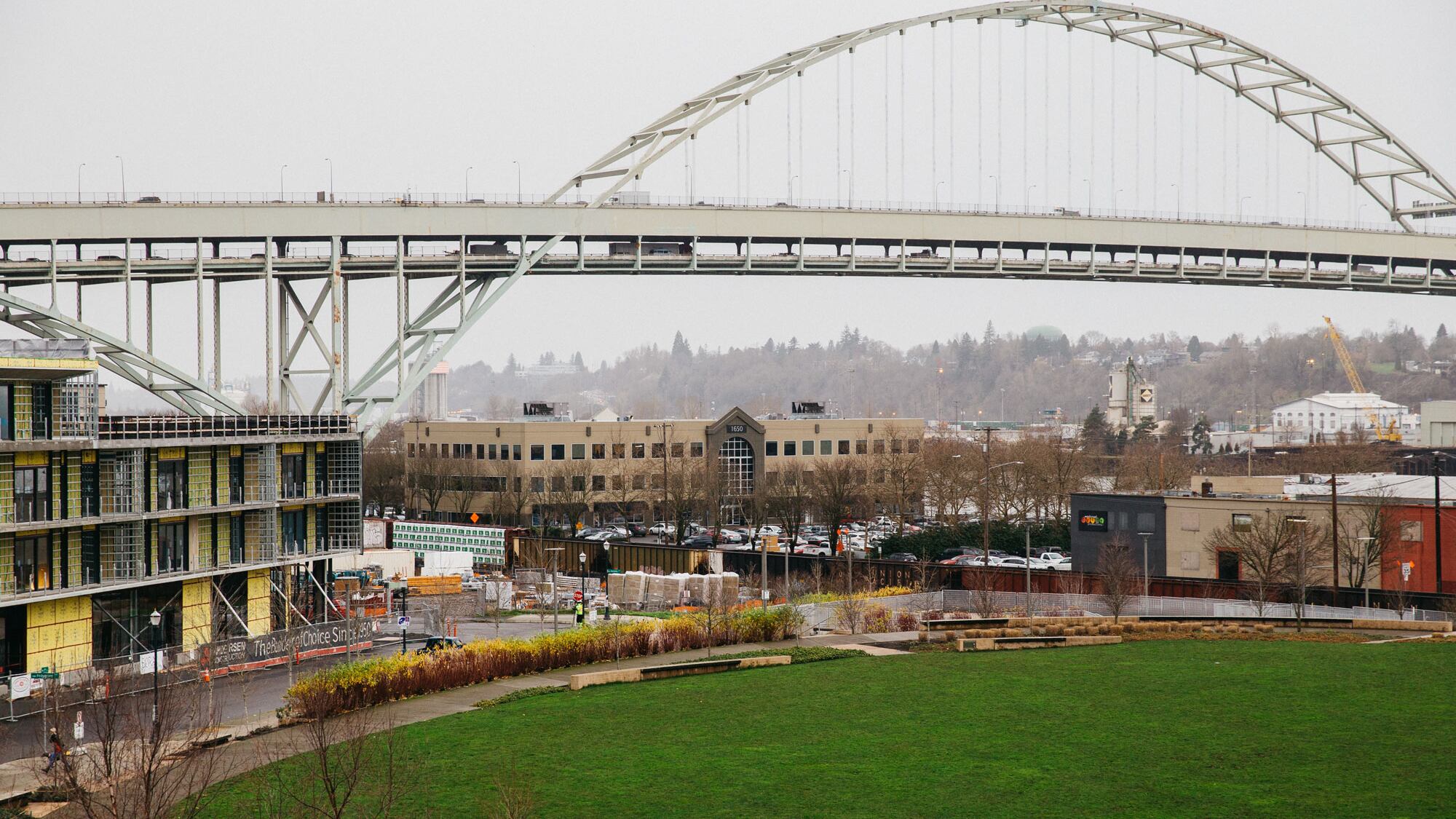Maybe Portland doesn't need more housing, after all.
City Council voted unanimously this morning to overturn a decision to approve a 17-story building in the Pearl District that would rise near the Fremont Bridge. The vote is preliminary; a final vote will be taken in four weeks' time.
Neighborhood activists, many with views of the bridge from their windows, had opposed the building on the grounds that it would block the views from their own buildings and the park.
City Council sided with the Pearl District Neighborhood Association, which had appealed an approval of the project, though council members said it wasn't about the views.
"I completely do not buy any of the arguments we've heard around views," Mayor Ted Wheeler said. "There will be development in that area. It designed for development. It's planned for development."
(Commissioner Amanda Fritz, who had the longest list of objections to the project, even warned the project's opponents that she and they had lost the fight over height and views already in the city's plans for raising the height limits.)
But Wheeler voted against approving the project and presented his own reasons for doing so—protecting the bike and pedestrian path along the Willamette River known as the Willamette Greenway.
"This location is an iconic location," says Wheeler. "What we do here with the first development will set the standard …. The one thing that we can absolutely never take back is the location of the building in the greenway."
It was a remarkable objection from the mayor, given that Wheeler has repeatedly said he supports making design review less onerous. The city's Design Review Commission had approved the building in this case, and the Pearl District Neighborhood Association had appealed the decision, raising multiple technical objections.
City Commissioner Nick Fish had also laid out his objections, particularly criticisms of the narrow width of the greenway. He said he favored the greenway in South Waterfront, where the city requires as much as 100 feet width including shrubs.
"This particular greenway is wholly unsatisfactory," says Fish. "It narrows to a small entry point where you have to navigate between a wall and a planter. That is not a successful greenway."
But the Fremont Place Apartments project is subject to a 25-foot requirement for the greenway. (That will change as soon as May under the Comprehensive Plan that has been approved by Council, but it is not the standard the project was subject to.)
The Design Review Commission had allowed the project what's called a modification, to extend the building above the third floor into what's technically considered greenway space.
Fish's chief of staff Sonia Schmanski said the "greenway criteria, like most, are subjective"—which gives City Council wide latitude in blocking development.
Commissioner Dan Saltzman also mentioned the greenway, and Commissioner Chloe Eudaly did not offer an explanation for her vote.
It's not clear what the developers will do at this point.
“We obviously are extremely frustrated and disappointed,” says Patrick Gilligan of the development firm Lincoln Property Company.
